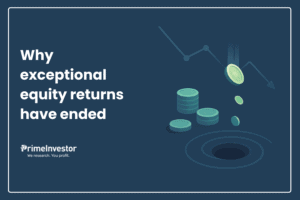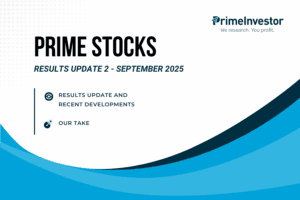Company A buys out Company B, triggering positive and happy noises in the market. Share prices of both companies jump in joy on the announcement. The news then gets digested and analysed. Shareholders of both companies realise after a bit, that they should have sold out in the first few days after the announcement, rather than swallow stories of ‘synergies’, ‘cost savings’, ‘market leadership’, ‘inorganic growth’ and other jargon that are usually peddled to sell mergers, in company releases and analyst reports.
This script has been played out many times in the markets, including recently. But how does one sift through the jargon and make real sense of a merger announcement?

What drives M&A
I’ve generally observed that mergers and acquisitions (M&A) happen due to one or more of the following reasons:
- The buyer is in a hurry to grow the topline. Buying a company that is already in the business, helps to grow the topline
- The buyer wants foothold in new markets/new geographies
- The seller has some resource that is not easy to procure and the buyer needs that resource to grow
- The buyer has a lot of money and wants to simply venture into a new space
- The buyer wants ‘backward’ integration to improve profitability
- The selling company is on the block and the buyer gets caught in a competitive bidding war
There could be more reasons, but I cannot think of any more economic ones. Yes, sometimes you just want to kill a competitor, so you buy him out.
M&A is never proposed by shareholders. It is a promoter-driven action which is generally handed as a fait accompli to shareholders. The shareholders in the buying company will be involved when there is payment to be made for the acquisition or merger through a fresh issuance of equity shares. A company doing a merger or acquisition for a cash payment, does not even need this rubber-stamping. There are legal formalities that are long drawn before the bought-out entity is taken over or is merged and ceases to exist.
Who really wins
Companies and analysts usually love to describe mergers or takeovers as ‘win-win’. But as an investor, take this with a pinch of salt. In most M&A situations, the deal generally happens at a price that is convenient to the seller. I am not talking about the bankruptcy cases under law, where the selling company shares go to zero and the buyer is only paying for the assets and assuming a predetermined liability.
What I have observed over time is that in an M&A situation, the winner is usually the company that is getting acquired. The sale usually happens at a which generally over-values the target’s assets and has limited long-term impact on the acquirer’s valuation. When Company A buys shares of Company B at a very high price, the share of Company B will rise and that of Company A will fall over time.
Mergers can be for cash or through share swaps or a combination. Share swaps can happen during bull or bear markets. In bull markets, I will be happy to sell the shares and get out. In a bear market, I do not mind keeping the shares. A cash offer is generally a good deal, especially if accompanied by an open offer.
People problems
I also notice that when mergers happen, management and analysts talk of cost savings and synergies assuming that the people of the two organisations will somehow seamlessly work together. But this is divorced from what actually happens.
The buying company will be seeking to impose its work culture and style over the seller’s employees. The people in the sold company are often unhappy because the work culture, the reporting lines etc get refreshed and they often have to prove themselves all over again to the new owners. Very often, key personnel from the seller company quit, as they do not want to bow down to a new boss. Everything from reporting lines to working styles change and some folks do not want to accept changes that are forced on them.
The selling promoter rarely takes any steps to protect his employees, except build in some negative covenants. The buyer has a challenge from day one in trying to protect the business and growth, while keeping the workforce happy. Yes, a manufacturing plant will work as before. However, the other functions will not be easily integrated.
Recent M&A
Let us take the recent example of HDFC and HDFC Bank. What I have seen over time is the distinctly different cultures in the two entities. The seniors in the housing finance company will suddenly find themselves being pushed with targets on business and a bottom-line that is far more aggressive. Over time, they will be just another business line for the Bank and lose their distinct identity. Yes, valuations may change over time, giving a better valuation to the HDFC Ltd shareholders if the bank shares command a better price to book or PE multiple.
The shareholder of HDFC Ltd (I know I will not be liked for this) is left wondering whether he is better off or worse off. Would someone have paid a higher price for the shares? Why did we not get a brand value premium? On 1st April, the shares of HDFC Ltd closed at around Rs.2450 and that of HDFC Bank at around Rs.1506. Going by the announced merger ratio, the imputed price per HDFC share is around Rs.2530 per share.
It is a tiny premium to the market price and I always wonder if some private equity player would have been willing to pay a significantly higher price for my HDFC Ltd shares. If I am getting sold at a higher price, I can have my cake and eat it too. With the higher price I get, I can buy more shares in HDFC Bank and be a richer man.
Another wayward thought. HDFC Ltd could have sold the promoter stake in HDFC Bank to a new person at a great price. So, the HDFC Ltd shareholder should have been given all these options. I do not buy the ‘regulatory’ bit. Every business has increasing regulatory compliances and if one is in the fiduciary business, it is a good thing. There is no escape. World over, we have banks and we also have housing finance companies.
Let me look at another recent one. Zee Entertainment is getting acquired by Sony.
Is it a good thing for the seller? Here, it may turn out to be good, given that Sony will be in the driver’s seat as per that shareholding. If that is correct, then perhaps it is a winning deal for the Zee shareholder too. The Zee promoter shareholding had fallen to a dismal low and it was ripe for a takeover. This arrangement of Sony is still to unfold, but at first sight it does look like Sony will be in command, though one fails to understand why it is giving a right to the old promoter to buy new shares and get a significant stake.
Vague rationale
Is it because it wants the Zee promoter to run the business with ‘skin in the game’? There is no rationale offered to the shareholder. The shareholder’s ownership is being diluted without much explanation. I do not see full transparency in the transaction. I also hope that there is an ‘open offer’ since there is a change in promoter. That will help one to decide the future course of action. It will be good if Sony conveys its intentions in full as to whether it will combine its India entity with Zee and other details that give us an indication of the longevity of the Sony interest in Zee.
Then there are these funny mergers and acquisitions that the PSUs undertake. Folding two bad banks into another big, bad one. I doubt if anyone gains anything from this. Then there are these acquisitions by groups such as Reliance. They are designed to add to scale and give sustenance power to the bought entities. They save them the ‘time to market’ and or give them backward integration. Right from their buying of companies like ICI, IPCL to their aggressive buying in the retail space, there appears to be a clear plan. Knowing RIL, one can be sure that they buy at prices convenient to themselves rather than the seller.
A merger has to ensure that both the bought and the sold companies thrive. Once Sony takes over Zee, which brand would it push? Both would be competing for the same audience. HDFC Bank already has a division that pushes home loans and passes on the business to HDFC Ltd. When a domestic pharma company buys another, which marketing team would be retained? I know that if RIL were to acquire Future, they are probably simply increasing the number of outlets and are adding the market share that Future had. Future as a brand would be no more.
There are cases where companies advance rationale for M&A based on what is expedient at the time. First, when taking over, they say that they want to ‘diversify’ into new areas. Then, they hive off some business and say they want to focus on core competencies. In all these cases, the non-promoter shareholders do not have any say, except some legal formalities where shareholders generally do not participate. A good instance is Raymond’s takeover of ColorPlus in 2003. The 74% stake was later divested to a subsidiary.
Now we hear that Raymond wants to sell both Color Plus and their Park Avenue business. It is hard to make sense of this retail strategy. They also plan to have a real estate business because they had some vacant land. Why did they promote so many businesses, list them separately, merge them all? Would they one day want to list all of them again?
Overall, given the different possible ways M&A can play out, as an investor, I do not get carried away by the announcement. The run up in prices on the day HDFC twins announced their mergers seems to have been illogical. Unless the world thinks that the combined entity will make significantly more profits than the sum of the two separate entities. Time will tell if that really happens.







2 thoughts on “What they don’t tell you about M&A”
Thanks for a compelling narrative on M&A, but as small investors we are confused lot.
When TSLLP was a buy after the M&A it became a sell, now its HDFC turn ? Hold/Add/Sell.
Personally, I will keep this as a part of my portfolio. Yes, I hold both the stocks. Maybe will reduce to some extent.
Comments are closed.